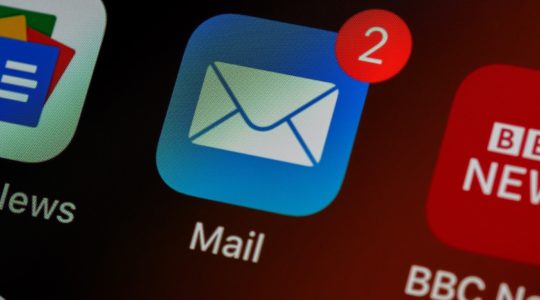
You’ve invested weeks and months of marketing resources designing and developing your app, but when you launch in the app stores you don’t get as many installs as expected. What happened?
Creating a mobile app takes a lot of resources, but that’s only half of the work. Promoting your app effectively is the most important element for a successful launch. Here are five key tactics you should have in your marketing plan to have a successful mobile app launch.
1. A landing page for your app on your corporate website (SEO)
Traditional search engine optimization (SEO) best practices also apply to mobile apps. You new app should have a dedicated marketing page on your current corporate website. That page will be the foundation of future cross-promotion with your other marketing campaigns and linking opportunities, external and internal. For example, somewhere in the app description you should provide a link to your desktop website. The website should also link back to the destination of the mobile app in the app store(s). Linking between the app store and the website boosts the app’s SEO value and also confirms that the app is authentic, not an imposter.
In addition to cross-linking with the app store, you should also focus on optimizing the mobile landing page that the app lives on. The app itself won’t get crawled by search engines to determine what the app does, or who the app is for. Instead, the search engine will look at the content on the page that the app lives on to determine the relevancy. Follow traditional SEO tactics — use metadata attributes, focus and align your keyword strategy, write rich content, etc. — to show up in prime location organically in search results.
2. Optimize for discovery in the app stores (ASO)
In addition to optimizing the page that your app lives on for your corporate website, you also want to optimize the page that your app lives on in the app stores. This is called app store optimization, or ASO for short. The descriptive content submitted with the app is vital to the app’s success in the app store when submitting in app to app stores. These are the areas that you want to optimize:
-
Title of the app – determines the URL and title tag of the web page the app is hosted on. Choose a title for the app that reflects the brand and also the app’s function. This allows your app to be found by your brand name as well as the purpose of the app if brand isn’t top of mind for the user.
-
Category of the app – is important for better visibility in niche and vertical searches. A lot of times an app can fit into several categories. If there is no single best fit, choose the category that best fits the app’s purpose but also contains the least number of competing apps.
-
Keyword field – influences the search results because there is far less text to indicate relevance of an app than there is for a traditional web page. Just as Google and major search engines frown on keyword stuffing on websites, stuffing the keyword field with unrelated keywords can get an app rejected from app stores. So play fair – stick with descriptive keywords that are relevant to the purpose of the app.
-
Description field – is the largest area of the page and acts like the main content on a web page. As with traditional SEO for websites, the description for the app should be written for the target audience and be optimized with relevant keywords.
3. Internationalize and localize
Although the United States app store market is the largest revenue opportunity, users from other countries can benefit from an app that supports their native language and country. To validate the importance of internationalization and localization, Apple sent an email to its developers with the sole purpose of reminding them of the benefits of localization apps to provide a more pleasant user experience and reach more users. Apple offers clear steps to help app developers internationalize and localize apps to capture the opportunity of more revenue, by attending to the native user experience of other countries worldwide.
However, when investing resources in localizing your app, be sure to know your target audience. It would be a waste of resources to localize (and maintain the app) for every country and language. You have to consider the incremental downloads and revenue you can gain from internationalization and localization strategies.
4. Social promotion & reviews
Encouraging users to review your app is one of the most powerful marketing tactics that will boost your inbound traffic and app install. It is important to proactively gather reviews of your app because they are a strong social first impression, showing up right after the title of an app listing. Here are a few ideas for social media promotions:
-
Incentives – if you have a paid mobile app, you can use Facebook (or any other social media channel) to offer it for free on a certain day to any fan/follower/subscriber.
-
Youtube – create a Youtube video of your app to show it’s function in a real life demo. Be sure to include a ‘download’ call to action.
-
Forums/Communities – share the news of your app launch in any forums or communities you’re a member of. Encourage and ask people to try it out and share feedback.
-
Add social media endorsements in app description – when your first users are sharing positive reviews about your app, grab those endorsements and put them in your mobile app description.
5. Advertising
Allocating budget for an advertising campaign for the launch of your mobile app can boost your initial installs and increase your organic lift for your app. The most important part of advertising your mobile app is targeting the right audience. Here are the top mediums for advertising your mobile app:
-
Mobile Web Ads – As you might guess, advertising your mobile app on mobile web browsers is one of the best ways to get people to instantly download your app. Users are already using their mobile phones and can easily navigate to your app download link.
-
In-App Ads – In addition to using in-app ads to increase incremental revenue for a user of an app, you can also use it as an opportunity to advertise your own app, especially if it’s relevant to the app the user is already using.
-
Networks – You can advertise your app through incentivized networks, like TapJoy, to boost app installs. Networks connect advertisers to web sites that want to host advertisements.
-
Desktop Web Ads – Whether you go with search ads or banner ads, you can use this type of advertising to point directly to your listing in any of the app stores for a direct download.
-
Social Media – Facebook and Twitter is making it easier for mobile app marketers to advertise on social media. Facebook launched Mobile App Install Ads as a way for marketers to specifically advertise apps, and Twitter is experimenting with adding ‘click to download’ right in the Tweet card to make the user acquisition experience as seamless as possible.
If you’re seeing a high churn rate of people downloading your app and then quickly uninstalling it, you should analyze your marketing efforts to find out where you can drive higher quality users. Find out which marketing activities are driving a lot of traffic but not a lot of installs. Look for channels that drive high conversion rates from a visitor to an install. Furthermore, identify which channels drive the highest valued users by also tracking in-app activities.
Author
Becky is the Senior Content Marketing Manager at TUNE. Before TUNE, she handled content strategy and marketing communications at several tech startups in the Bay Area. Becky received her bachelor's degree in English from Wake Forest University. After a decade in San Francisco and Seattle, she has returned home to Charleston, SC, where you can find her strolling through Hampton Park with her pup and enjoying the simple things in life.




Great ways for marketing applications – Thanks Jennifer
For Android users, extending distribution beyond Google Play can help as well. That in combination with localization improves your odds of success. Self-publishing services like CodeNgo can help with this.
Thanks Jennifer, great insights! Any details about the different types of in-app ads (video, banners, interstitials) and how they perform or are relevant for a specific campaign?
Thanks Jennifer !! This is a very useful blog.
http://www.purplechai.com
[…] – See more at: http://www.hasoffers.com/blog/market-mobile-app/#sthash.pMkzbdxm.dpuf […]
Hello,
It is true, but also the app reviews helps a lot. I use the free site getappreviews . net to help get new user reviews.
Hello to all, I just released a new App named wouzee available on the iTunes and GooglePlay, since we are in beta I would really appreciate testing and feedback. Thank you very much.